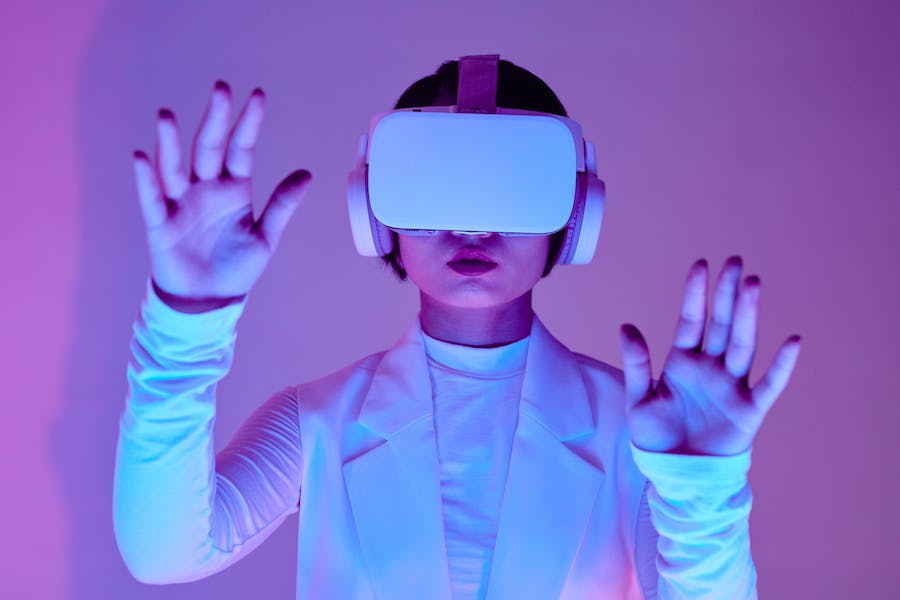Introduction: A New Era of Immersive Experiences with 4K VR
The realm of virtual reality (VR) is transforming, with the development of 4K VR headset marking a new era of immersive experiences. These headsets promise unparalleled clarity and detail, taking users into a world where the virtual and real are almost indistinguishable. However, bringing this technology to life is not without its challenges. Developers work tirelessly to overcome various obstacles, from addressing hardware limitations to ensuring user comfort. This article delves into the intricate journey of designing 4K VR headsets, highlighting the innovative solutions to address these challenges.
Overcoming Computational Power Challenges
Managing the computational power required is one of the most significant challenges in building 4K VR headsets. Delivering high-resolution visuals at the necessary frame rates for VR necessitates powerful processing capabilities. Traditional virtual reality systems rely on tethered connections to powerful PCs or game consoles. The push toward more user-friendly, standalone devices, on the other hand, has resulted in considerable increases in on-board processing power and graphical capabilities. Companies such as Oculus and HTC are at the vanguard of this transformation, incorporating sophisticated processors and GPUs into their headsets to meet the demanding demands of 4K VR.
Innovations in Display Technology and Comfort
Another major problem is the display technology itself. To achieve 4K resolution in the small space of a VR headset, extremely dense pixel arrays are required. This increases the potential of the screen-door effect, in which viewers may see the grid of pixels, destroying the illusion of immersion. Manufacturers are experimenting with different display panels, such as OLED and micro-LED, to fight this, offering higher pixel density and better color reproduction. Furthermore, foveated rendering, in which only the region the user is looking at is rendered in high resolution, is being investigated to reduce processing load while maintaining visual integrity.
Ergonomics and Optics: Enhancing User Experience
Another important feature of 4K VR headset design is comfort. Increased resolution frequently implies more substantial hardware, which might result in heavier and bulkier headsets. Designers are rethinking headset ergonomics to improve user comfort, particularly during lengthy use. This involves distributing weight over the head more evenly, employing lighter materials, and refining strap designs for improved fit and stability. Heat generation, a major concern with high-performance electronics, is now being addressed with advanced cooling systems.
Connectivity and Power Management
Another area of emphasis is connectivity. As the trend shifts toward wireless VR experiences, sustaining the high data transmission rates required for 4K content becomes more difficult. To do this, developers leverage Wi-Fi 6 and 6E technologies, which provide more bandwidth and lower latency. Furthermore, battery technology developments are critical for powering these wireless headphones. With constant research into more efficient power management and longer-lasting battery materials, the balance between battery life and performance is difficult.
Content Creation and Accessibility Challenges
Content development is also evolving with the introduction of 4K VR headsets. Higher resolution necessitates more realistic environments and textures, driving content production to new heights. This has resulted in an increase in the creation of more advanced 3D modeling tools and rendering software, allowing developers to create immersive and intricate virtual worlds that fully utilize the possibilities of 4K VR.
Promoting User Safety and Ethical Concerns
As 4K VR technology advances, user safety and ethical considerations are becoming increasingly important. The high level of immersion provided by 4K VR headsets can significantly impact the user’s psychological condition. It is critical to ensure that information is developed ethically to avoid undesirable psychological effects such as confusion or desensitization. Furthermore, given the sensitive nature of biometric and behavioral data collected by these devices, ethical considerations concerning privacy and data security in VR environments are crucial. Industry leaders and regulatory agencies are working hard to develop rules and guidelines to protect users while encouraging a healthy, ethical VR ecosystem.
Conclusion: The Bright Future of 4K VR
Finally, the road to creating 4K VR headsets is fraught with complicated design hurdles. Each challenge necessitates novel solutions, from increasing computing power and display technologies to improving comfort and connectivity. As these problems are gradually overcome, 4K VR headsets are poised to push the frontiers of immersive entertainment, providing more realistic and engaging experiences than ever before. The future of virtual reality is bright, and as technology advances, it promises to bring us closer to virtual worlds that are as rich and colorful as our own.





















